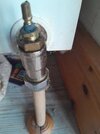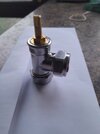The manual you posted says 250mm minimum, but irrelevant now it's pressurised.The cold water feed tank was literally 20cm higher than the boiler when removed and pressurising the system.
Page 12
Static head -
Minimum static head 250mm measured from the highest
point in the heating system (top surface of the appliance or
the highest point in the heating system) to the water level in
the feed and expansion tank



